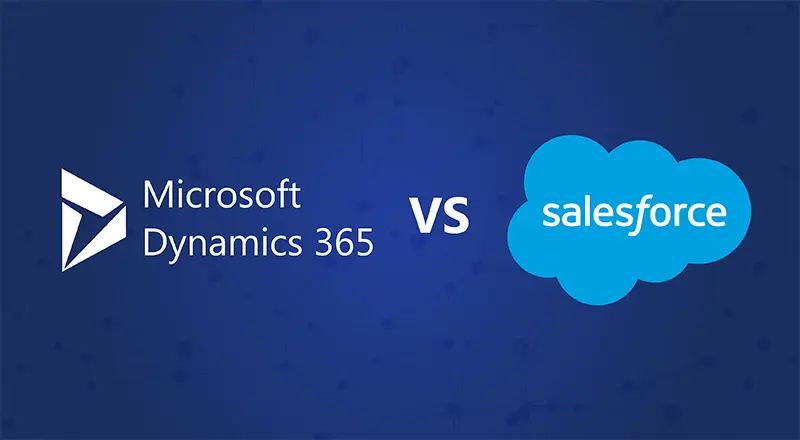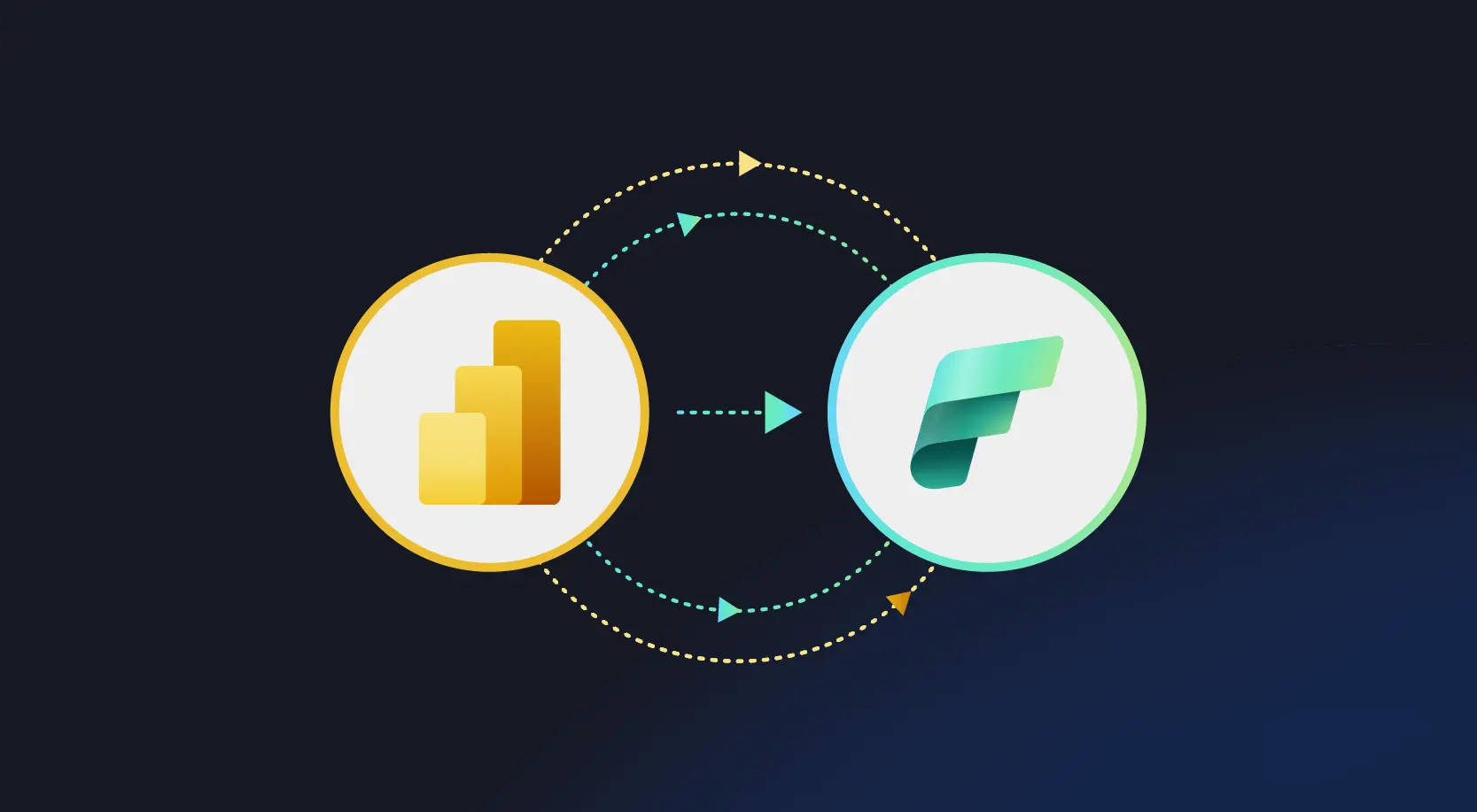
Business owners spend a lot of time trying to decide which CRM solutions will provide the highest overall value to their organization. While most CRM solutions provide standard functionality, there is more to consider when making a choice. Parameters such as cost, deployment flexibility, customization, integration capabilities,and user experience make the competition steep.
In the CRM world the two leading systems on the market are Microsoft Dynamics 365 and Salesforce. Both are mature solutions and have the best features in the market. But the question is, which is better for your organization?
Here are seven reasons why we think Microsoft Dynamics 365 is better than Salesforce:
1. Cost
Managing costs is always going to be a concern for most of the organizations. Microsoft Dynamics 365 is offered at a lower cost as compared to Salesforce, which is themost expensive CRM solution available.With Dynamics 365, you get more features and functionalities at a more reasonable price.
Microsoft Dynamics 365 offers different plans based on customer needs. You can buy the complete suite or implement individual applications. Overall Microsoft offers an Enterprise CRM Suite that includes case management, basic marketing, and customer service as well as sales force automation. Below are different plans available for Dynamics 365:
- Customer Engagement Plan
- Includes Sales, Service, Field Service, Marketing, and Project Service Automation modules
- Unified Operations Plan
- Includes Finance and Operations, Retail, and Talent modules
- Dynamics 365 Plan
- Includes all modules available in above two plans
- Applications and offers
- Allows you to start with what you need and upgrade to plans as your business grows
For a more comprehensive guide to plans and pricing, check https://dynamics.microsoft.com/en-us/pricing/
Salesforce offers only sales force automation. Any add-ons are more expensive and less inclusive. Below are different licensing plans based on modules which you would like to implement:
Salesforce offers only sales force automation. Any add-ons are more expensive and less inclusive. Below are different licensing plans based on modules which you would like to implement:
- Sales Cloud Plans
- Lightning Essentials
- Lightning Professional
- Lightning Enterprise
- Lightning Unlimited
- Service Cloud Plans
- Lightning Essentials
- Lightning Professional
- Lightning Enterprise
- Lightning Unlimited
- Sales + Service Cloud Plans
- Professional
- Enterprise
- Unlimited
- Marketing Cloud
- Email, Mobile and Web Marketing
- Social Media Marketing
- Advertising
- B2B Marketing Automation
For a more comprehensive guide to plans and pricing, check https://www.salesforce.com/in/editions-pricing/sales-cloud/
2. Deployment
With Microsoft Dynamics 365, you have the power to choose the deployment model, depending upon the changing business needs of your organization. For example, your business may have its own infrastructure, but you want more control on your applications and data that can only be achieved through an on-premises deployment. Or, small companies which are not able to afford infrastructure costs, can go for online deployment where they simply pay according to usage. The three types of Dynamics 365 deployment models are:
- On-Premise: You can host Dynamics 365 in your own data center. With this option you have complete control of your instance and data.
- Online: You can have your own dedicated setup which can be hosted by Microsoft or a Partner. This is a subscription solution and you don’t need to worry about servers, license cost, backup, and maintenance. You just pay and start using the application.
- Hybrid Cloud: This is combination of both On-Premise and Online models. You can use Microsoft Azure Cloud to deploy your Dynamics 365.
On the other hand, Salesforce offers only on-demand, multi-tenant hosting option. With just a one-dimensional solution, you do not have full ownership and control over your solution. In addition, it might increase your company’s total cost of ownership in the long run.
Quick look at the comparison with respect to deployment options:
| Deployment Option | Dynamics 365 | Salesforce |
| Cloud Deployment | Yes | Yes |
| On-Premise | Yes | No |
| Hybrid Cloud | Yes | No |
Read this blog for detailed insights on Microsoft Dynamics 365 Online versus On-Premise deployment.
3. Customization & Extensibility
One of the greatest strengths of Microsoft Dynamics 365 is its use of universal programming languages like Java Script, .NET, Silver Light, and HTML. This means that businesses have the advantage of customizing and extending the solution to meet their changing needs. Dynamics 365 API supports wide variety of methods and functions to integrate with other systems as well.
Microsoft Dynamics 365 uses a metadata driven architecture to provide the flexibility to create custom entities and additional system entity attributes. You can customize views, create new business entities, fields, forms, workflows and more without even coding. This structure also makes upgrades and the transportation of customizations easier. The data structure can change without requiring any change to code in the Microsoft Dynamics 365 server or client applications.
Salesforce on the other hand can be extended using its own proprietary language, known as Apex. There is no other way users can customize or extend the functionality. This limits development and flexibility which in turn leads to slower speeds for business processes.
Quick look at the comparison with respect to customization:
| Supporting Languages/ Technologies | Dynamics 365 | Salesforce |
| Java Script | Yes | No |
| .NET | Yes | No |
| HTML | Yes | No |
| Apex | No | Yes |
4. Data Ownership
When you choose any tool for your CRM implementation, you should have full access and control to your data. After all it is your data and your application.
With Microsoft Dynamics 365, the data belongs to you. Data backups are available upon request and API access to your data is included with your subscription. If you want a more controlled setup, then you can choose an On-Premise deployment, which will provide you full ownership of the solution and data as well. You can schedule backups and maintenance as per your convenience. And most importantly, you can have your own security measurements.
When it comes to Salesforce, it charges an additional fee for API access or data backup.
Quick look at the comparison with respect to data ownership:
| Category | Dynamics 365 | Salesforce |
| Data Archive & Restore | Regular data backup by Microsoft for Online deploymentBusinesses should take care of backups in case of On-Premise deploymentMicrosoft will take care of restoring of database | Salesforce does not provide enterprise-class data archiving, restoration, and compliance capabilities with the core applicationCustomers can manually monitor their data storage limits and run basic data archiving processes or invest in partner applications to automate and comply with corporate data retention policies |
| API Access | Yes | Yes (extra cost) |
| On Demand Backup Request | Yes | No |
| Web Services Support | REST and SOAP | REST and API |
| Data Center Limitations | No | Data centers are leased from a third-party web-hosting facility, Equinix, in North America and Asia. Salesforce does not have a data center in Europe |
| Configuration and Code | You can easily package configurations using solutions in Dynamics 365 | Salesforce has no ability to backup and restore configurations, customizations, or APEX code without a sandbox |
| Sandbox Refreshes | Dynamics 365 sandbox can be refreshed whenever you want | Full sandboxes can only be refreshed every 29 days |
5. Integration
One of the most significant reason in favor of Dynamics 365 is its easy integration with other Microsoft technologies. Dynamics 365 works well with apps such as SharePoint, Power BI, Outlook, Yammer, Azure, and Office. ERP integration (Dynamics AX, Dynamics GP, Dynamics NAV) is possible using the Microsoft Dynamics Connector. Integration with ESB can be done by using Azure Bus, BizTalk, and Mule. Data integration with other legacy systems can also be done easily using tools such as SCRIBE and SSIS.
Even though Salesforce Outlook integration has been there for a while, it has its own set of limitations. Businesses that choose to use Salesforce find integration more difficult and limiting in terms of functionality.
Quick look at the comparison with respect to data integration:
| Integration Type | Dynamics 365 | Salesforce |
| Outlook | Yes | Limited |
| SCRIBE for Data Integration | Yes | Yes |
| Cross Platform Support | Yes | Limited |
| Office 365 Integration | Yes | No |
| SharePoint Integration | Yes | No |
| App Store | Yes | Yes |
6. Support
Microsoft Dynamics 365 has a much larger customer support network, which provides a variety of self-support and assisted support options depending on your need. It also has a bigger community network of ecosystems. There are a lot of useful Add-Ons already available in market place. Some of them are free and some of them are chargeable.
Salesforce doesn’t have as many on-site consulting options. The company provides reasonable telephone support based on varying fee structures. The volume of Salesforce partners supporting small and midsize businesses is very low.
Both Dynamics 365 and Salesforce have 24X7 support. You can log a ticket through the online portal if you are facing any issues with the application. However, the only difference is, Microsoft phone support for Dynamics 365 is included in the subscription license (Online) or perpetual license (On-Premise) fee, whereas you must buy it separately in case of Salesforce.
Quick look at the comparison with respect to application and customer support:
| Category | Dynamics 365 | Salesforce |
| Automatic Updates | Dynamics 365 upgrades can be delayed and scheduled as per customer convenience | There is no option to delay or postpone product upgrades in Salesforce |
| Phone Call Support | Included in subscription | Extra cost |
| SLA | Yes | Salesforce doesn’t have agreed SLAs |
| Developer and Advanced Technical Support | Yes | Not Always |
| On-Site Consulting | Yes | Limited |
7. User Friendly
User adoption is one of the critical success factor for any implementation. Even though both Salesforce and Microsoft Dynamics provide an extremely user-friendly software which is easy to use, Microsoft’s UI is still a good bet.
The ease of use of Dynamics 365 and its similarity with other Microsoft products is a big advantage. The latest version of Dynamics 365 (9.0) comes with a Unified User Interface, which give the same look and feel across all devices (mobile, tablets, and desktops).
Quick look at the comparison with respect to user friendliness:
| Topic | Dynamics 365 | Salesforce |
| UI Style | Unified User Interface across all devices (Mobile, Tablet, Desktop) | Traditional form style |
| Automating Routing Rules | Yes | No |
| Language Support | Around 45 languages | Around 16 languages |
| Office Suite | Yes | No |
| Visualization | User can create charts, dashboards, or reports on their ownDynamics 365 can be integrated with Power BI for rich analytic optionsDynamics 365 can be extended to create SSRS reports | Salesforce provides a basic set of tools to create reports and dashboards. Customers with business intelligence requirements will need to subscribe to a third-party tool |
| Outlook Client | Yes | Limited |
| Browser Compatibility | IE, Chrome, Safari | IE, Chrome, SafariNeed few settings in case of few versions and there are some limitationsRead more on browser compatibility |
Determining the best CRM solution is subject to your specific business objectives. Both Microsoft Dynamics 365 and Salesforce are exceptional CRM solutions for businesses of any size. But ultimately, Dynamics 365 is a better choice because of its robust third-party integration offering, broader functionalities/capabilities, lower cost, and simpler interface.






